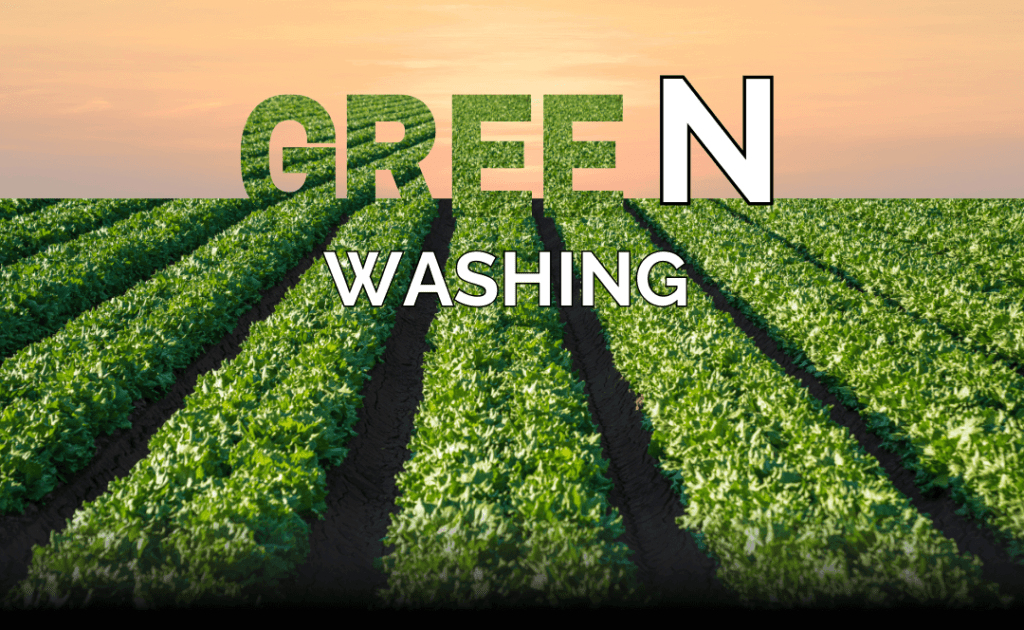Last updated on October 22nd, 2024 at 02:51 pm
Greenwashing “prominently used in corporate marketing”, and also called green sheen. Is a form of marketing and advertising that uses Green PR and Green Marketing tactics to convince Eco conscious consumers that their products, services and activities are environmentally friendly.
“Greenwashing”, was coined by environmentalist Jay Westerveld in 1986 after he saw a beach resort asking guests to reuse towels in order to reduce ecological damage to oceans and reefs. Ironically, the resort was in the middle of an expansion that would lead to them damaging the ecosystem.

Everything we produce has an environmental cost. So, if a company is simply making vague statements with terms like “green, eco-friendly, organic and sustainability” without any proof to show exactly how they are doing so, then they are most likely using the words to sell you a product or service.
It doesn’t matter how much you have to spend on marketing – a broad approach dilutes your message and weakens its impact.
Think of it like a restaurant. Even the most popular restaurants don’t cater to every taste. A sushi restaurant wouldn’t try to attract steak lovers, and that’s okay! They focus on perfecting their sushi to attract sushi fans, and that’s how they become the best sushi restaurant.
The same goes for marketing.
Some skincare and cosmetic companies, “in ad campaigns” consistently front the one natural ingredient in their products to give the consumer the illusion that the other ingredients aren’t harmful to them or the environment.
The UN Secretary General, in a speech at World Environment Day 2024, called for a global ban on fossil fuel advertising and urged creative agencies to stop aiding fossil fuel companies in greenwashing.
Being an Eco conscious consumer is hard work, but if being environmentally friendly is something your really passionate about, here’s 3 ways you can avoid falling victim.
Many “Green Businesses” will advertise their products as 100% degradable or recyclable but won’t put any information on the label that it is only possible if discarded properly and weathered in the right conditions. Consumers may fall victim due to a lack of transparency and informational context leaving you to look for additional certification to verify their claims.
If something reads like it’s too good to be true, then it probably is.
They signify that a product has met national or international standards. Look up what each label means, the process behind its certification and the type of products associated with it. Use the ecolabel index to cross-reference the Eco labels you don’t recognize.
Take time to go through a company’s website for proof of “green efforts”. If you can’t find any certification or the product label is vague, “It’s good for the planet” but doesn’t say how, then it could be a hidden trade-off.
Green Marketing is the promotion of products and services that are good for the environment whilst improving brand perception. As a result of climate change, changing consumer attitudes and regulatory developments it is more popular. And different from traditional marketing.
Green Marketing focuses on strategies that promote environmental awareness and protection.

A 2023 study found that 39% of Gen Z and 42% of millennial consumers were more likely to pay more for sustainable products and services.
According to the PwC’s 2024 voice of the consumer survey, consumers are willing to pay a “9.7% average” more for sustainably produced goods. 85% of the respondents reported experiencing the impacts of climate change in their daily lives whilst promoting sustainable consumption practices.
The 2024 sustainability trends emphasize the need for “green businesses” to put out honest communication about their sustainability efforts.
Sustainable marketing is the promotion of social and environmentally responsible products, services and practices. It aims to create long term value for businesses and generations to come.
Companies can differentiate themselves in the market, attract socially conscious consumers and contribute to a more sustainable future whilst making profits, by implementing Eco-friendly digital campaigns such as;
Forget about “content creation” or telling us what you have done for the environment or communities. We want to hear it “raw” from your consumers and beneficiaries. Find ways to involve them and encourage them to spread the message. It’s important to take a non promotional approach to Storytelling.
Real-life examples can help build trust, raise awareness and drive positive change.
According to a Frontiers in Communication study, providing factual claims about a product’s environmental benefits is essential. Vague or exaggerated claims are often perceived as manipulative or deceptive.
Educate consumers about the environmental impact of your products, services and activities from sourcing to production.
According to the Future of Commerce, “with more than 4 billion people actively using the internet, the combined carbon footprint of energy, infrastructure and communication technologies like smartphones + computers totals to about 3.7% of greenhouse emissions globally, in comparison to the airline industry”.
The faster and easier it is for people to find the content they are looking for, the more efficient the website, and the lower carbon emissions each page visit produces.
Small changes can have large consequences.
As an SEO and website developer professional, this was mind-blowing because I’d never thought about it that way.
Visual social media platforms such as Facebook, Instagram and YouTube are a great way for businesses to demonstrate their commitment to sustainability. An emphasis on “visual” because video and image content performs better than text.
As creative agencies, content writers or marketers, we all play a vital role in promoting sustainability and combating greenwashing. It’s essential to ensure that the messages we put out, for companies are accompanied by proof / action.
Sorry! you can't copy content.
Industry-relevant Marketing and Sales Tips, Trends, and Strategies for your Brand, Products & Services. Delivered straight to your inbox.
From weekly SEO Optimized Blog Posts to Social Media Posts , Ads & Scientific Research Papers, we write content for Nonprofits & Companies in the STEM Industry.